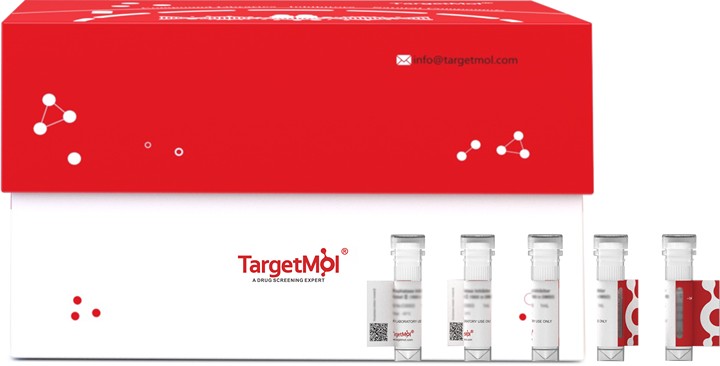购物车
全部删除  您的购物车当前为空
您的购物车当前为空
ISG15 Protein, Human, Recombinant (mature form) is expressed in E. coli expression system. The predicted molecular weight is 17.2 kDa and the accession number is AAH09507.1.

| 规格 | 价格 | 库存 | 数量 |
|---|---|---|---|
| 10 μg | ¥ 98 | 6-8日内发货 | |
| 20 μg | ¥ 137 | 5日内发货 | |
| 50 μg | ¥ 228 | 5日内发货 | |
| 100 μg | ¥ 363 | 5日内发货 | |
| 200 μg | ¥ 585 | 5日内发货 | |
| 500 μg | ¥ 1,080 | 5日内发货 | |
| 1 mg | ¥ 2,190 | 5日内发货 |
| 生物活性 | Activity testing is in progress. It is theoretically active, but we cannot guarantee it. If you require protein activity, we recommend choosing the eukaryotic expression version first. |
| 产品描述 | ISG15 Protein, Human, Recombinant (mature form) is expressed in E. coli expression system. The predicted molecular weight is 17.2 kDa and the accession number is AAH09507.1. |
| 种属 | Human |
| 表达系统 | E. coli |
| 标签 | Tag Free |
| 蛋白编号 | AAH09507.1 |
| 别名 | UCRP,ISG15 ubiquitin-like modifier,IP17,IMD38,IFI15,hUCRP,G1P2 |
| 蛋白构建 | A DNA sequence encoding the mature form of human ISG15 (AAH09507.1) (Met 1-Gly 157) was expressed and purified. Predicted N terminal: Met 1 |
| 蛋白纯度 | > 95 % as determined by SDS-PAGE |
| 分子量 | 17.2 kDa (predicted); 15 kDa (reducing conditions) |
| 内毒素 | Please contact us for more information. |
| 蛋白性状 | Lyophilized powder |
| 缓冲液 | Lyophilized from a solution filtered through a 0.22 μm filter, containing 50 mM Tris, pH 8.0.Typically, a mixture containing 5% to 8% trehalose, mannitol, and 0.01% Tween 80 is incorporated as a protective agent before lyophilization. |
| 复溶方法 | A Certificate of Analysis (CoA) containing reconstitution instructions is included with the products. Please refer to the CoA for detailed information. |
| 存储 | It is recommended to store recombinant proteins at -20°C to -80°C for future use. Lyophilized powders can be stably stored for over 12 months, while liquid products can be stored for 6-12 months at -80°C. For reconstituted protein solutions, the solution can be stored at -20°C to -80°C for at least 3 months. Please avoid multiple freeze-thaw cycles and store products in aliquots. |
| 运输方式 | In general, Lyophilized powders are shipping with blue ice. |
| 研究背景 | Interferon-induced 17 kDa protein (ISG15), a 15-kDa protein of unique primary amino acid sequence, functions intracellularly as a ubiquitin homolog and a cytokine that induces production of IFN-gamma and augments NK / lymphokine-activated killer cell proliferation and function. ISG15 is secreted from monocytes and lymphocytes. ISG15 is a ubiquitin-like molecule that is strongly upregulated by type I interferons as a primary response to diverse microbial and cellular stress stimuli. Alterations in the ISG15 signaling pathway have also been found in several human tumor entities. In addition to being stimulated by type I interferon, expression of ISG15 is greatly induced by viral or bacterial infection through the Janus kinase/signal transducer and activator of transcription (Jak / STAT) signaling pathway. After induction, ISG15 is secreted by monocytes, B- and T-lymphocytes, and fibroblasts. We demonstrate the novel way in which the function of the ISG15 protein is inhibited by influenza B virus, which strongly induces the ISG15 protein: a specific region of the influenza B virus NS1 protein, which includes part of its effector domain, blocks the covalent linkage of ISG15 to its target proteins both in vitro and in infected cells. |